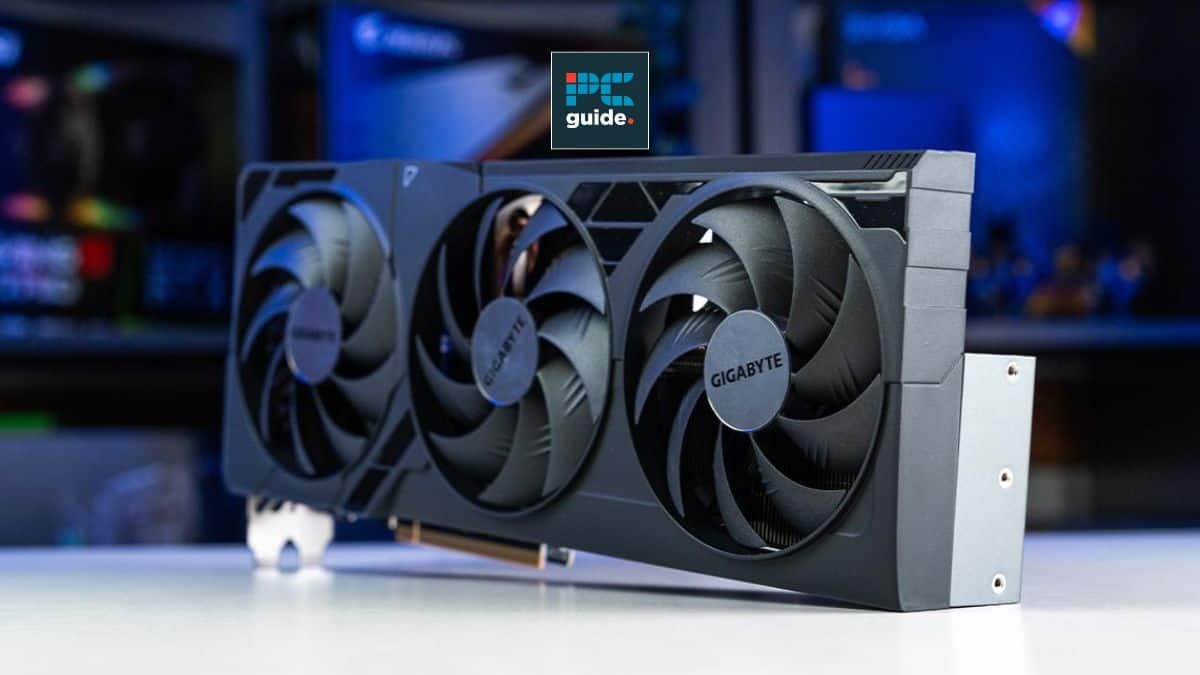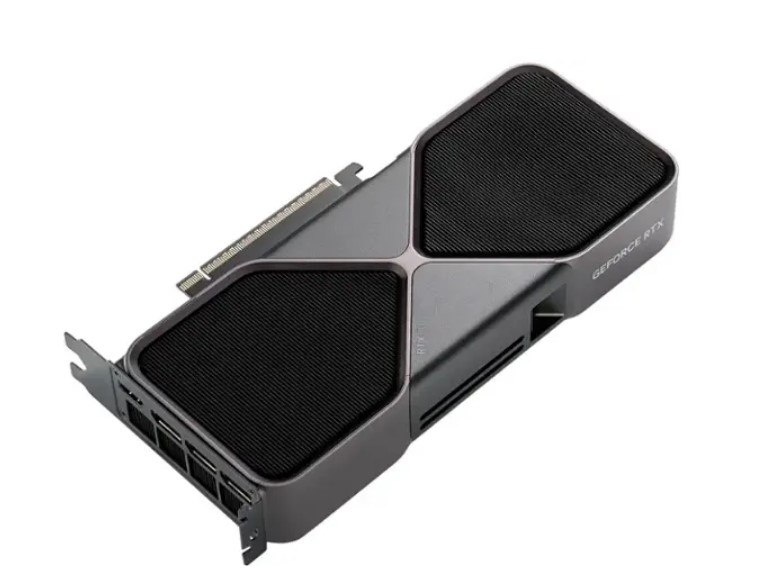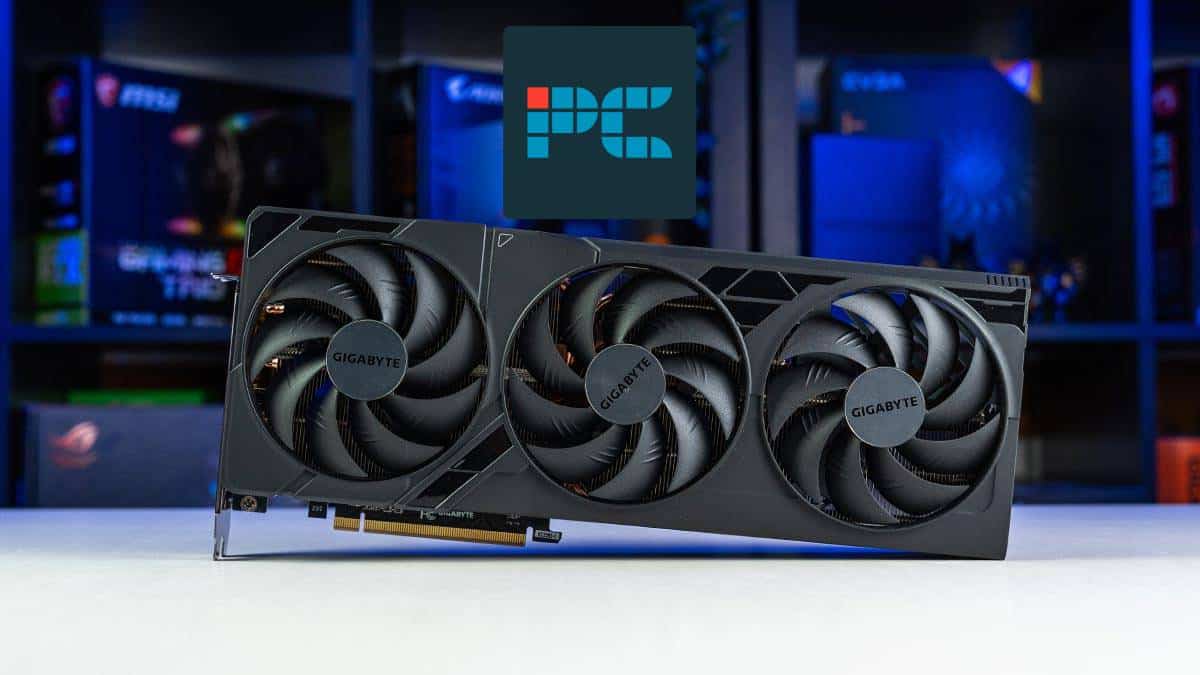RTX 5070 Ti vs RTX 4080 Super comparison – which one should you go for?

Table of Contents
So the RTX 5070 Ti is finally here, and the reviews are in. Overall – it’s a great card for 4K and 1440p gaming, improves on the 4070 Ti, and even comes close to the 5080, but there’s a big problem – its price. The MSRP makes it very appealing from a cost/ performance perspective, but it’s near impossible to find at this price thanks to various stock issues plaguing the launch…a common theme it appears.
The whole pitch of this card was that it would offer 4090-eque performance for a slither of the cost, so things change a lot if that cost is higher than previous mentioned. If you’ve thought about this yourself, you may be considering other options – even going back to the previous generation…
Prime Day is finally here! Find all the biggest tech and PC deals below.
- Sapphire 11348-03-20G Pulse AMD Radeon™ RX 9070 XT Was $779 Now $739
- AMD Ryzen 7 7800X3D 8-Core, 16-Thread Desktop Processor Was $449 Now $341
- ASUS RTX™ 5060 OC Edition Graphics Card Was $379 Now $339
- LG 77-Inch Class OLED evo AI 4K C5 Series Smart TV Was $3,696 Now $2,796
- Intel® Core™ i7-14700K New Gaming Desktop Was $320.99 Now $274
- Lexar 2TB NM1090 w/HeatSink SSD PCIe Gen5x4 NVMe M.2 Was $281.97 Now $214.98
- Apple Watch Series 10 GPS + Cellular 42mm case Smartwatch Was $499.99 Now $379.99
- ASUS ROG Strix G16 (2025) 16" FHD, RTX 5060 gaming laptop Was $1,499.99 Now $1,274.99
- Apple iPad mini (A17 Pro): Apple Intelligence Was $499.99 Now $379.99
*Prices and savings subject to change. Click through to get the current prices.
Cue the RTX 4080 Super, one of the best cards of the 40-series, one of our highest rated, and an excellent alternative to the 5070 Ti. Here, we’ll compare the two using a number of different reviews/ benchmarks for the RTX 5070 Ti (we’ll update with our own once we finish our own review and testing), and our own findings from our 4080 Super testing.
Which one will come out on top, considering the circumstances of the 5070 Ti launch and availability? Here’s how they stack up against each other.
RTX 5070 Ti vs RTX 4080 Super specs comparison
Looking down at the basics, we compare how the two graphics cards compare on the specs level without yet seeing the performance. We’ll highlight some of the biggest factors and how they might affect things between the two cards. There are definitely some interesting factors between the two options.
| Specifications | RTX 5070 Ti | RTX 4080 Super |
|---|---|---|
| Cores | 8,960 | 10,240 |
| Base clock speed | 2.3 GHz | 2.3 GHz |
| Boost clock speed | 2.45GHZ | 2.55 GHz |
| Memory | 16GB GDDR7 | 16GB GDDR6X |
| Memory interface | 256-bit | 256-bit |
| Bandwidth | 896 GB/sec | 736 GB/sec |
| TGP | 300W | 320W |
| Power connector | 2x PCIe 8-pin cables or 300 W or greater PCIe Gen 5 cable | 3x PCIe 8-pin cables or 1x 450 W or greater PCIe Gen 5 cable |
| Release date | 20th February 2025 | 31st January 2024 |
Performance difference
When comparing the performance of these two cards, we use our own 4080 Super benchmarks, but we also look at other reviews to see what the 5070 Ti is capable of. This will give us a good indicator of the card’s capabilities while we wait to test it ourselves.
RTX 5070 Ti vs RTX 4080 Super 4K performance
Starting off with the highest resolution case and what it is capable of at 4k. Here, the differences in the memory have the highest impact, but still, the lead of the RTX 4080 Super in CUDA cores can give it the extra lead. With such huge textures to load up, it is a very demanding scenario and definitely puts the cards through their paces.
It’s also best to pair them up with the best CPU for the job, as most of the reviews and ours utilize the Ryzen 7 9800X3D as the top processor for the graphics cards. That allows us to see the full potential of what the cards are capable of.
In Cyberpunk 2077, that results in a 67FPS average framerate with 58 1% lows for the RTX 5070 Ti across certain reviews. In comparison, the RTX 4080 Super in those same scenarios gets an average of 69FPS and 60FPS. In our testing, that’s a bit older now, with the 4080 Super achieving 51 FPS, so it will be good to get a renewal on these with our new bench. But it does show both can work pretty well in getting a playable framerate, where the 4080 Super only leads by around 3%.
In Counter-Strike 2, where it’s a lot easier to run with plenty of frame rates, there is quite a bit more in it. The RTX 5070 Ti gets 332 FPS compared to the 351 FPS of the RTX 4080 Super. That is a difference of around 6%, dropping behind the older-gen card.
Then, in Stalker 2, which has quite a heavy load on graphics, the RTX 5070 Ti averages 41 FPS, compared to the 44 the RTX 4080 Super is capable of. Here, the 50 series falls behind by 7% in the game benchmarks.

RTX 5070 Ti vs RTX 4080 Super 1440p performance
Turning things down a notch, we see what the two are capable of in 4k gaming. That might be better suited for the 70 series card to get better stable performance over 60FPS. We continue to look at the same games to compare how the performance is between them.
In Cyberpunk results, the 5070 Ti achieved an average FPS of 124, while the RTX 4080 Super gets an average of 134 FPS. That extends the 40 series cards’ lead up to 8%. Then in Counter-Strike 2, that results in a 470FPS and 523FPS average, respectively, resulting in a 10% lead for the older card.
Finally, in Stalker 2, the RTX 5070 Ti averages 64FPS, compared to the 69FPS average the RTX 4080 Super is capable of, giving it a lead of 8%. That makes it a lot more playable framerate with the good quality image it can produce, making them both good options to go for at that resolution for that particular game.
RTX 5070 Ti vs RTX 4080 Super synthetic performance
As always, Nvidia leads the way in synthetics, and that is prolific in rendering and the like. So, it’s no surprise here that they both do very well in the rendering scenarios. In 3DMark, we see the 4080 Super achieve a score of 17,005 in Fire Strike Ultra as the 4070 Ti manages to pip it at 18,065.
Whereas in Time Spy Extreme, that is 13,622 compared to 13,485 respectively. All of these were at 4K and show the VRAM boost being more important as the newer card takes the lead in this case. Giving the RTX 5070 Ti an edge of 6% and 1% is not a lot, but it certainly gives it something to its name, considering the lower price.

Design differences
Cores
One of the most important parts is the CUDA cores that make up the graphics processor. They are the part responsible for creating the graphics you see and doing the work to render out your videos. Between the two generations, there is an expected difference with a move from Ada to Blackwell in architecture that may work in different ways with different performances.
However, Nvidia has stuck to the same process node. Using TSMC’s 5nm for both means the transistor size will stay the same and won’t really affect the die size either. Due to that, the die between the 4080 Super and 5070 Ti is reportedly the same size with a near-identical transistor count.
Even still, the 40 series model brings 1,280 more CUDA cores, offering a 13% uplift in cores that can offer an increase in performance, even if it’s not a direct one-to-one difference. That’s because there are plenty more factors that affect the general performance.
These are also clocked differently and work at different speeds to get the job done. Here, the factory boost clocks from Nvidia aren’t too different, as the 4080 Super is capable of getting 100 MHz higher for that small uplift in performance. Where it will differ more is in the custom models that will have overclocked frequencies, pushing what the die is capable of more than the factory offers. So it might get even closer between the two cards, depending on where you look.
Memory
Another big influence on performance is the VRAM onboard the card and how fast it is. Holding onto the data that the GPU works on, like the textures and video information, means it has a great impact on the performance and how much it can do. Something like 4K capability needs plenty of capacity, and it sure needs to be fast, but as always, that costs more to do.
Between the 4080 Super and 5070 Ti, we have got an upgrade in the memory tech used, resulting in a faster bandwidth. Since the Ti is now on GDDR7, allowing it to be clocked at 28Gbps compared to the 23Gbps on the Super, resulting in a 20% increase in the bandwdith.
Now, when it comes to the capacity, well, here it remains stagnant. As both cards offer only 16GB, even the same as the 5080, it might not seem enough for cards aiming at those higher resolutions. Especially as the RTX 5090 flaunts double that with a total of 32GB.
TGP
Total graphics power is a count of how much electricity the card needs to run, a big factor in deciding the power supply you need to pair with it. It also affects the cooler design and how much of a worry it might be for working with your system to get the most out of it. Which resulted in some rather high designs like the RTX 4090 Strix.
However, between these two, there’s not much difference in their power rating. The 5070 Ti comes close to the same TGP as the 4080 Super as it’s only 20W behind with a 300W total power needed. This is a substantial amount to consider since it recommends a 750W PSU to power the system.
Price and availability
If you’re looking to buy either card, the market’s not looking too great right now. Checking our RTX 5070 Ti stock tracker, it was pretty much sold out immediately after it launched. So even if you were looking to grab one you’re out of luck. Looking at the MSRP of the two cards, the Ti was said to be priced at $749, compared to the RTX 4080 Super that launched for $999.
Since the 50 series is so hard to track down, you might be tempted to look toward the 40 series. There, you might just find plenty of overpriced cards, though, as even this long after release, the market is in turmoil. Looking at Newegg 4080 Super listings, the lowest available card is at $1,499.99, a whopping $500 over the launch price.
It might just be best to wait out at this point and hope the situation gets back to normal. Over time, there might be more stock down the line, and you might be lucky enough to pick one up, especially if you trust Nvidia’s Priority Access program.
Verdict
Overall, the RTX 4080 Super does take the lead when it comes to gaming performance, but the 5070 Ti definitely closes the gap. Although it certainly has newer features to take advantage of as well, that makes it all the better to pick. Especially considering the price of it is lower than the 4080 Super, even without the price hike that has been seen since its launch.
You would be lucky to grab a 5070 Ti, too, since its launch, the stock has not been there to meet the demand, just like the rest of the lineup. It might just be worth the wait to see if it does become a lot more stable in availability. The addition of DLSS 4 can boost its performance with multi-frame gen for games that support it, which means it makes it all the more worthwhile of a choice.
Plus, the generational improvements to features like ray tracing and even the encounter with the rollout of the new NVENC give s you a lot more capability for your money. Just be patient, as it definitely won’t be worth going over the $750 mark that it has been set to.


